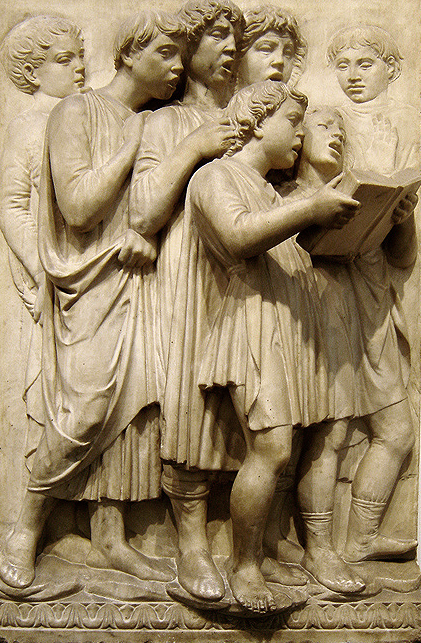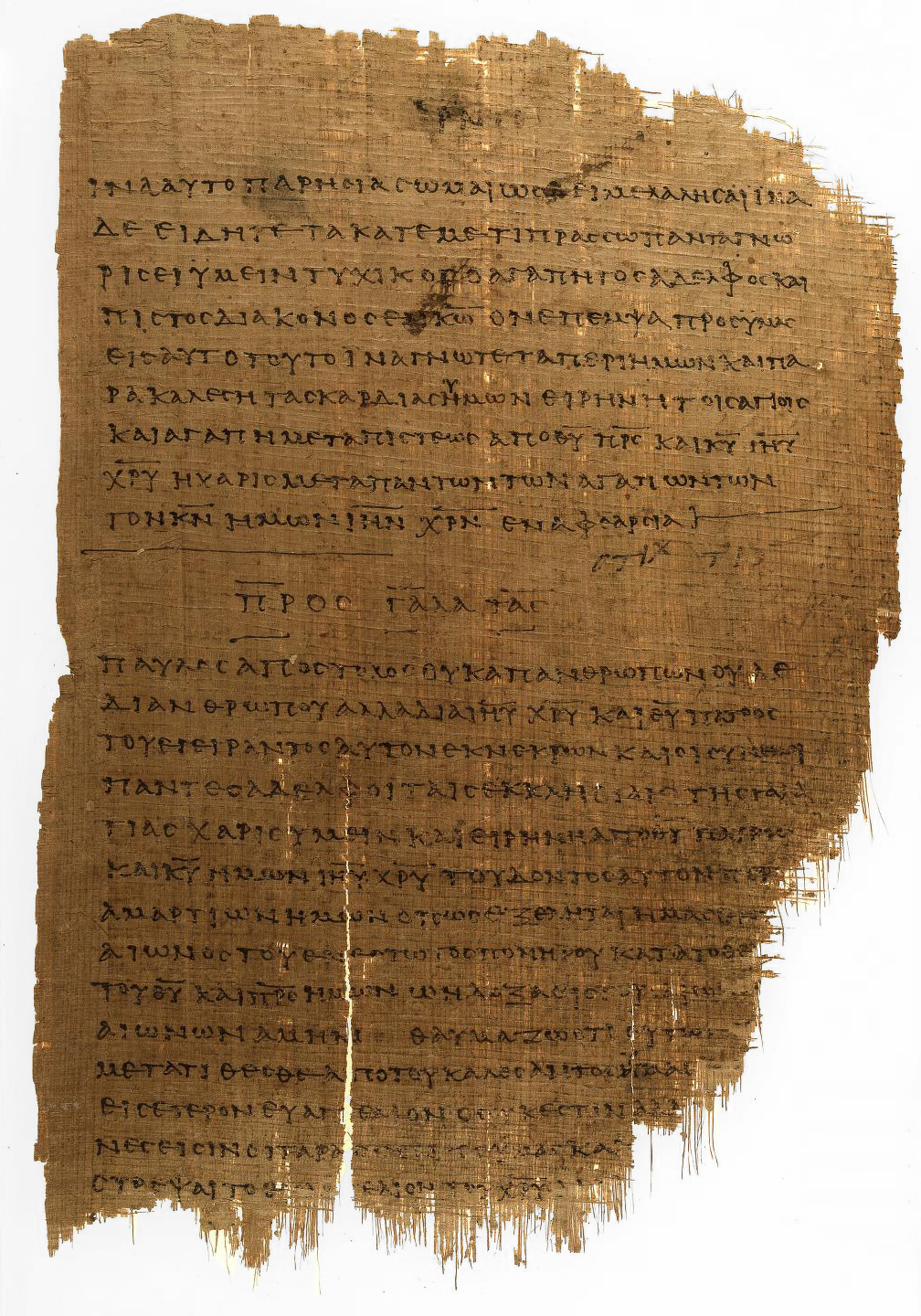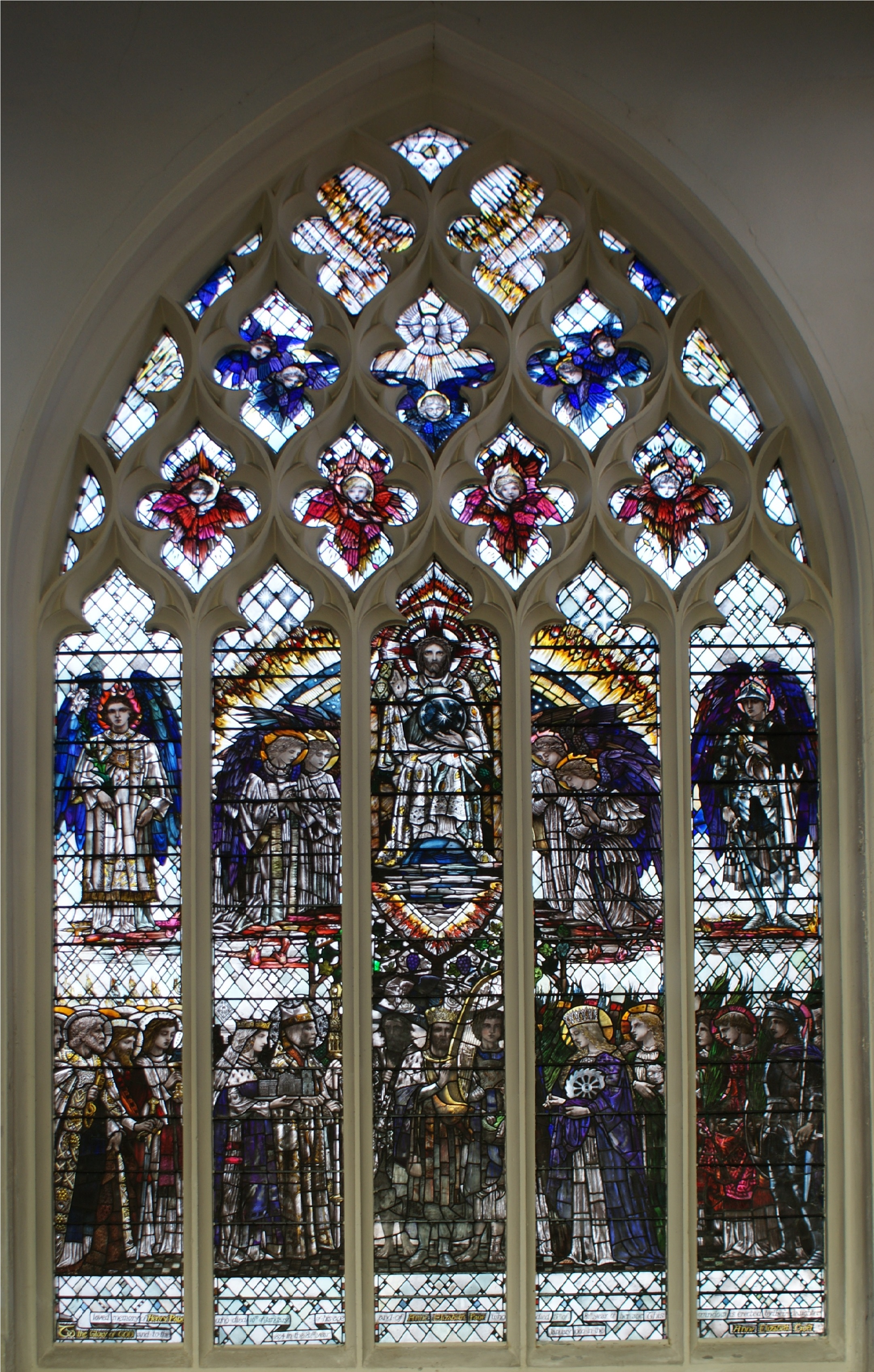|
BWV 190.1
(Sing a new song to the Lord), , is a church cantata by Johann Sebastian Bach. He wrote it in Leipzig for the New Year's Day and first performed it on 1 January 1724 as part of his first cantata cycle. He adapted it in 1730 to , for the celebration of the bicentennial of the Augsburg Confession. History and words Bach wrote the cantata in 1723, his first year as ''Thomaskantor'' in Leipzig, for New Year's Day, which is also the Feast of the Circumcision of Christ. The prescribed readings for the feast day were from the Epistle to the Galatians, by faith we inherit (), and from the Gospel of Luke, the circumcision and naming of Jesus eight days after his birth (). The unknown poet, possibly Picander, refers only in a general way to the readings: he mentions the naming at the end of movement 4, "" (name of Jesus), and he starts every line in the following aria with "Jesus". Otherwise the text stresses praise and thanks for the gifts of the past and prayer for further blessings. T ... [...More Info...] [...Related Items...] OR: [Wikipedia] [Google] [Baidu] |
Church Cantata (Bach)
Throughout his life as a musician, Johann Sebastian Bach composed cantatas for both secular and sacred use. His church cantatas are cantatas which he composed for use in the Lutheran church, mainly intended for the occasions of the liturgical year. Bach's ''Nekrolog'' mentions five cantata cycles: "Fünf Jahrgänge von Kirchenstücken, auf alle Sonn- und Festtage" (Five year-cycles of pieces for the church, for all Sundays and feast days), which would amount to at least 275 cantatas,Alfred Dörffel. Bach-Gesellschaft Ausgabe Volume 27: '' Thematisches Verzeichniss der Kirchencantaten No. 1–120''. Breitkopf & Härtel, 1878. Introduction, p. VI or over 320 if all cycles would have been ideal cycles.Günther Zedler''Die Kantaten von Johann Sebastian Bach: Eine Einführung in die Werkgattung''.Books on Demand, 2011. p. 24–25/ref> The extant cantatas are around two-thirds of that number, with limited additional information on the ones that went missing or survived as fra ... [...More Info...] [...Related Items...] OR: [Wikipedia] [Google] [Baidu] |
Epistle To The Galatians
The Epistle to the Galatians is the ninth book of the New Testament. It is a letter from Paul the Apostle to a number of Early Christian communities in Galatia. Scholars have suggested that this is either the Roman province of Galatia in southern Anatolia, or a large region defined by an ethnic group of Celtic people in central Anatolia. The language the letter was originally written in was Koine Greek and later translated into other languages. In this letter, Paul is principally concerned with the controversy surrounding gentile Christians and the Mosaic Law during the Apostolic Age. Paul argues that the gentile Galatians do not need to adhere to the tenets of the Mosaic Law, particularly religious male circumcision, by contextualizing the role of the law in light of the revelation of Christ. The Epistle to the Galatians has exerted enormous influence on the history of Christianity, the development of Christian theology, and the study of the Apostle Paul. The central disp ... [...More Info...] [...Related Items...] OR: [Wikipedia] [Google] [Baidu] |
Masaaki Suzuki
is a Japanese organist, harpsichordist and conductor, and the founder and music director of the Bach Collegium Japan. With this ensemble he is recording the complete choral works of Johann Sebastian Bach for the Swedish label BIS Records, for which he is also recording Bach's concertos, orchestral suites, and solo works for harpsichord and organ. He is also an artist-in-residence at Yale University and the principal guest conductor of its Schola Cantorum, and has conducted orchestras and choruses around the world. Biography Suzuki was born in Kobe to parents who were both Protestant Christians and amateur musicians; his father had worked professionally as a pianist. Suzuki has as an adult joined the Reformed Church in Japan, a Calvinist denomination. Masaaki Suzuki began playing organ professionally at church services at the age of 12. He earned degrees in composition and organ at the Tokyo National University of Fine Arts and Music, then earned Soloist Diplomas at the Sweelinck ... [...More Info...] [...Related Items...] OR: [Wikipedia] [Google] [Baidu] |
Levente Gyöngyösi
Levente Gyöngyösi (born 1975, Cluj-Napoca, Romania) is a Romanian-born Hungarian composer. He moved to Hungary in 1989, when he was 14. Works, editions and recordings * Opera ''A gólyakalifa'' (The Stork Caliph) after the novel of Mihály Babits. Hungarian State Opera, May 2005. * ''Assumpta est Maria'' for mixed choirs * ''Két keserû népdal'' ("two bitter folksongs") for mixed choir * ''Salve Regina'' for soprano solo, female choir and two instruments * ''Vanitatum vanitas'' for female chorus (2001) * ''Missa Lux et Origo'' for female choirs (2004) * ''Verkündigung'' ("Annunciation"), symphonic cycle in five movements (2003) * oratorio ''Canticle of the Sun,'' Budapest Spring Festival (2004) * ''Te lucis ante terminum'' * ''Confitemini Domino'' for female choirs * ''Dixit in corde suo'' for mixed choir and drum (2012) * Concerto for Piccolo and Orchestra. Composed for, premiered, and recorded by Peter Verhoyen (2022)https://www.etcetera-records.com/album/826/piccolo-conce ... [...More Info...] [...Related Items...] OR: [Wikipedia] [Google] [Baidu] |
Ton Koopman
Antonius Gerhardus Michael Koopman (; born 2 October 1944), known professionally as Ton Koopman, is a Dutch conductor, organist, harpsichordist, and musicologist, primarily known for being the founder and director of the Amsterdam Baroque Orchestra & Choir. He is a professor at the Royal Conservatory of The Hague and the University of Leiden. In April 2003 he was knighted in the Netherlands, and received the Order of the Netherlands Lion. Biography Koopman had a "classical education" and then studied the organ (with Simon C. Jansen), harpsichord (with Gustav Leonhardt), and musicology at the Amsterdam conservatory. He specialized in Baroque music and received the Prix d'Excellence for both organ and harpsichord. In the organ, he never learned how to play with heels and toes, and because of his short height, always plays with his toes on the pedalboard. This is an authentic Baroque practice. Koopman founded the Amsterdam Baroque Orchestra in 1979 and the Amsterdam Baroque Cho ... [...More Info...] [...Related Items...] OR: [Wikipedia] [Google] [Baidu] |
Diethard Hellmann
Diethard Hellmann (28 December 1928 – 14 October 1999) was a German Kantor and an academic in Leipzig, Mainz and Munich. Professional career Born in Grimma, Dietmann Hellmann was a member of the Thomanerchor. He studied church music in Leipzig with Günther Ramin. Hellmann was the organist for early recordings of Bach cantatas by Ramin. He was Kantor at the Friedenskirche in Leipzig from 1948 to 1955. At the same time, he was a teacher for organ at the Musikhochschule Leipzig, conducting the choir of the Hochschule, and until 1951, a teacher at the Fürstenschule in Grimma. In 1950, he won a prize for organ at the first International Bach Competition. He started teaching choral conducting in 1952 and was appointed vice director of the department for church music in 1954. In 1955, he became Kantor of the Christuskirche in Mainz, where he conducted the Kantorei, which in 1965, was named the Bachchor . In November 1955, he performed a concert of Bach cantatas. In 1958, he was ... [...More Info...] [...Related Items...] OR: [Wikipedia] [Google] [Baidu] |
Chorale
Chorale is the name of several related musical forms originating in the music genre of the Lutheran chorale: * Hymn tune of a Lutheran hymn (e.g. the melody of "Wachet auf, ruft uns die Stimme"), or a tune in a similar format (e.g. one of the themes in the Finale of Saint-Saëns's Third Symphony) * Such tune with a harmonic accompaniment (e.g. chorale monody, chorales included in ''Schemellis Gesangbuch'') * Such a tune presented in a homophonic or homorhythmic harmonisation, usually four-part harmony (e.g. Bach's four-part chorales, or the chorale included in the second movement of Mahler's Fifth Symphony) * A more complex setting of a hymn(-like) tune (e.g. chorale fantasia form in Bach's ''Schübler Chorales'', or a combination of compositional techniques in César Franck's ') The chorale originated when Martin Luther translated sacred songs into the vernacular language (German), contrary to the established practice of church music near the end of the first quarter of the ... [...More Info...] [...Related Items...] OR: [Wikipedia] [Google] [Baidu] |
Recitative
Recitative (, also known by its Italian name "''recitativo''" ()) is a style of delivery (much used in operas, oratorios, and cantatas) in which a singer is allowed to adopt the rhythms and delivery of ordinary speech. Recitative does not repeat lines as formally composed songs do. It resembles sung ordinary speech more than a formal musical composition. Recitative can be distinguished on a continuum from more speech-like to more musically sung, with more sustained melodic lines. The mostly syllabic ''recitativo secco'' ("dry", accompanied only by continuo, typically cello and harpsichord) is at one end of the spectrum, through ''recitativo accompagnato'' (using orchestra), the more melismatic arioso, and finally the full-blown aria or ensemble, where the pulse is entirely governed by the music. Secco recitatives can be more improvisatory and free for the singer, since the accompaniment is so sparse; in contrast, when recitative is accompanied by orchestra, the singer must per ... [...More Info...] [...Related Items...] OR: [Wikipedia] [Google] [Baidu] |
Te Deum
The "Te Deum" (, ; from its incipit, , ) is a Latin Christian hymn traditionally ascribed to AD 387 authorship, but with antecedents that place it much earlier. It is central to the Ambrosian hymnal, which spread throughout the Latin Church with other parts of the Milanese Rite in the 6th to 8th centuries. It is sometimes known as the Ambrosian Hymn, although authorship by Saint Ambrose is unlikely. The term Te Deum can also refer to a short religious service (of blessing or thanks) based upon the hymn. History Authorship of the hymn is traditionally ascribed to Saint Ambrose (died 397) or Saint Augustine (died 430). In 19th-century scholarship, Saint Hilary of Poitiers (died 367) and Saint Nicetas of Remesiana (died 414) were proposed as possible authors. In the 20th century, the association with Nicetas has been deprecated, so that the hymn, while almost certainly dating to the 4th century, is considered as being of uncertain authorship. Authorship of Nicetas of R ... [...More Info...] [...Related Items...] OR: [Wikipedia] [Google] [Baidu] |
Martin Luther
Martin Luther (; ; 10 November 1483 – 18 February 1546) was a German priest, theologian, author, hymnwriter, and professor, and Order of Saint Augustine, Augustinian friar. He is the seminal figure of the Reformation, Protestant Reformation and the namesake of Lutheranism. Luther was ordained to the Priesthood in the Catholic Church, priesthood in 1507. He came to reject several teachings and practices of the Catholic Church, Roman Catholic Church; in particular, he disputed the view on indulgences. Luther proposed an academic discussion of the practice and efficacy of indulgences in his ''Ninety-five Theses'' of 1517. His refusal to renounce all of his writings at the demand of Pope Leo X in 1520 and the Charles V, Holy Roman Emperor, Holy Roman Emperor Charles V at the Diet of Worms in 1521 resulted in his Excommunication (Catholic Church)#History, excommunication by the pope and condemnation as an Outlaw#In other countries, outlaw by the Holy Roman Emper ... [...More Info...] [...Related Items...] OR: [Wikipedia] [Google] [Baidu] |
Psalm 150
Psalm 150 is the 150th and final psalm of the Book of Psalms, beginning in English in the King James Version: "Praise ye the . Praise God in his sanctuary". In Latin, it is known as "Laudate Dominum in sanctis eius". In Psalm 150, the psalmist urges the congregation to praise God with music and dancing, naming nine types of musical instruments. In most versions of the Bible, the Book of Psalms has 150 psalms and Psalm 150 is the final one. However, that is not the case in the Eastern Orthodox and Syriac Orthodox canons, which have 151 and 155 psalms respectively. The Jerusalem Bible describes Psalm 150 as a "final chorus of praise". It is a hymn psalm, forming a regular part of Jewish, Catholic, Lutheran, Anglican and other Protestant liturgies. As one of the Laudate psalms, it was part of the Lauds, a Catholic morning service. It has been paraphrased in hymns and has often been set to music. Composers have written settings throughout the centuries, in various languages, i ... [...More Info...] [...Related Items...] OR: [Wikipedia] [Google] [Baidu] |
Psalm 149
Psalm 149 is the 149th psalm of the Book of Psalms, a hymn as the book's penultimate piece. The first verse of the psalm calls to praise in singing, in English in the King James Version: "Sing a new song unto the Lord". Similar to Psalm 96 and Psalm 98 (Cantate Domino), Psalm 149 calls to praise God in music and dance, because he has chosen his people and helped them to victory. Psalm 149 is also marked by its martial tone:Rodd, C. S., ''18. Psalms'' in Barton, J. and Muddiman, J. (2001)The Oxford Bible Commentary p. 404 it calls on the people to be ready to fight. The psalm forms a regular part of Jewish, Catholic, Lutheran and Anglican liturgies. It has often been set to music, notably by Antonín Dvořák who set the complete psalm for chorus and orchestra, while Bach chose only the first three verses for his motet ''Singet dem Herrn ein neues Lied'', BWV 225. It was paraphrased in hymns. Background and themes Psalm 149 shares its first line with Psalm 98, known as Cant ... [...More Info...] [...Related Items...] OR: [Wikipedia] [Google] [Baidu] |







